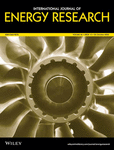Hierarchical carbon nanofibers@tin sulfide nanotube with sulfur-doped carbon layer for ultrafast lithium-storage capability
Funding information: National Research Foundation of Korea, Grant/Award Number: 2019R1 A2 C1005836
Summary
Combining a high-capacity material possessing a core@shell structure with a carbon material is a powerful tactic for reinforcing the performance of Li-ion battery (LIB) anodes. As an efficient and simple approach to obtain tin(II) sulfide (SnS) with ultrafast lithium-storage capability and cycling stability, we propose the hierarchical core@shell structure of carbon nanofibers@SnS nanotubes (CNF@SnSNTs) covered with S-doped carbon via a one-pot carbonization by harnessing the Kirkendall effect of camphene and sulfurization of SnO2 by L-cysteine. This hierarchical core@shell structure contains mesoporous carbon nanofibers (CNFs) that reduce the Li-ion diffusion pathway, SnS nanotubes (NTs) that expand the active site, and a S-doped carbon layer at the faces of the SnS NTs that promotes the electrical conductivity and inhibits volume expansion of SnS. Therefore, a CNF@SnSNT-C7 electrode achieves superb ultrafast electrochemical performance (528.1 mAh/g under a current density of 2000 mA/g), high specific capacity (2218.2 mAh/g under a current density of 100 mA/g), and an ultrafast cycling stability of 92.9% after 500 cycles under a current density of 2000 mA/g. These performance improvements are resulted from the synergistical effect of mesoporous CNFs, SnS NTs, and S-doped carbon layer. Therefore, CNF@SnSNT is potential anode material for LIBs having superior Li-storage capability.
Open Research
DATA AVAILABILITY STATEMENT
Data available in article supplementary material.




